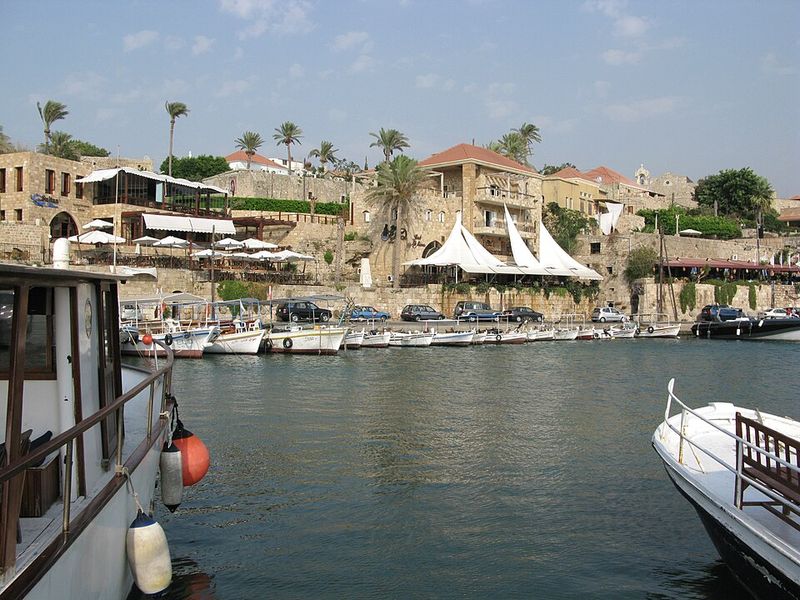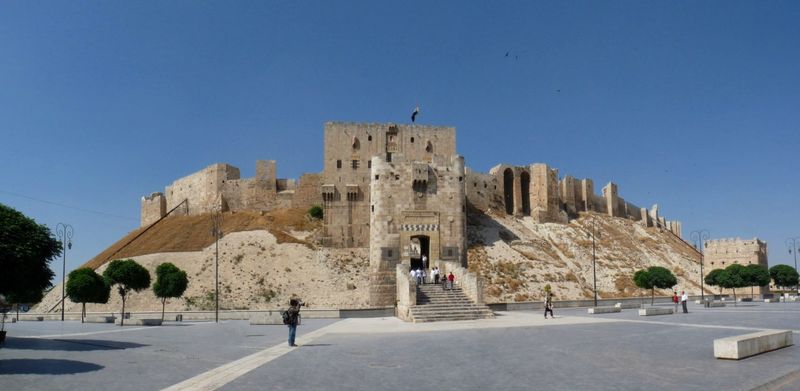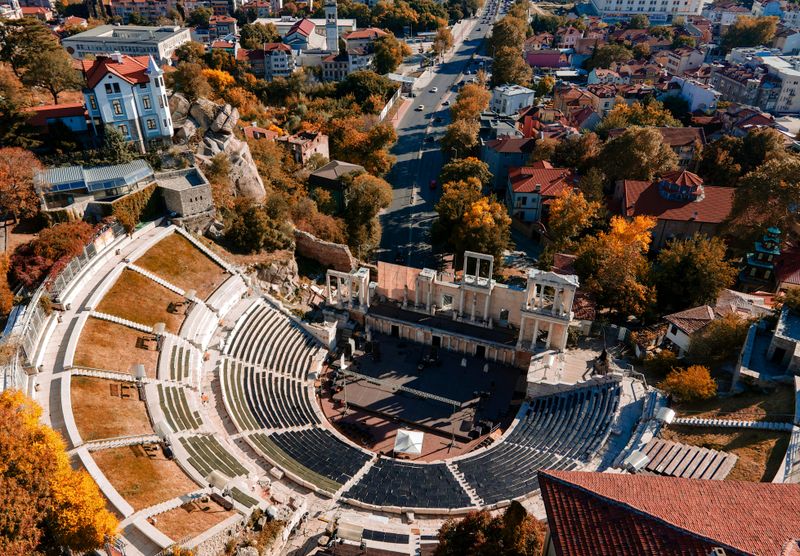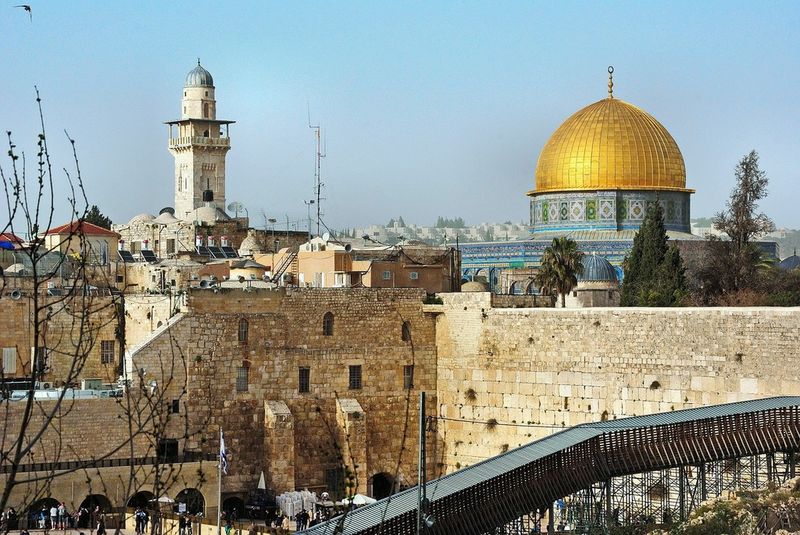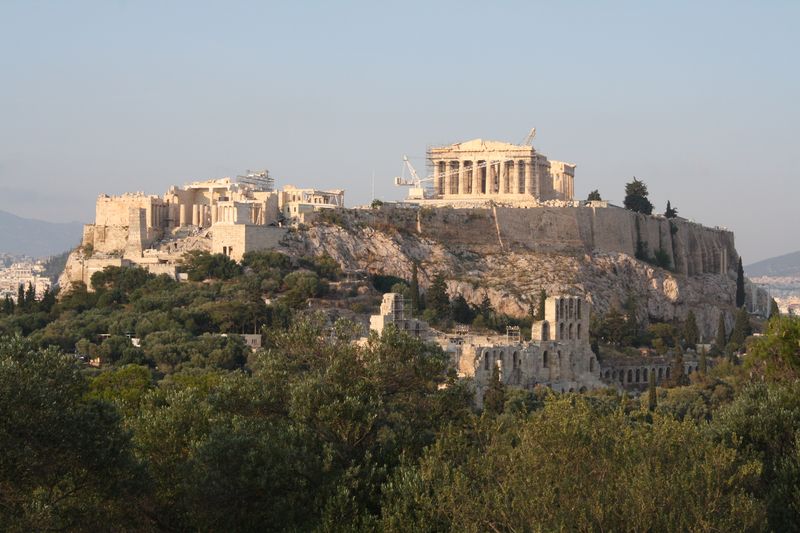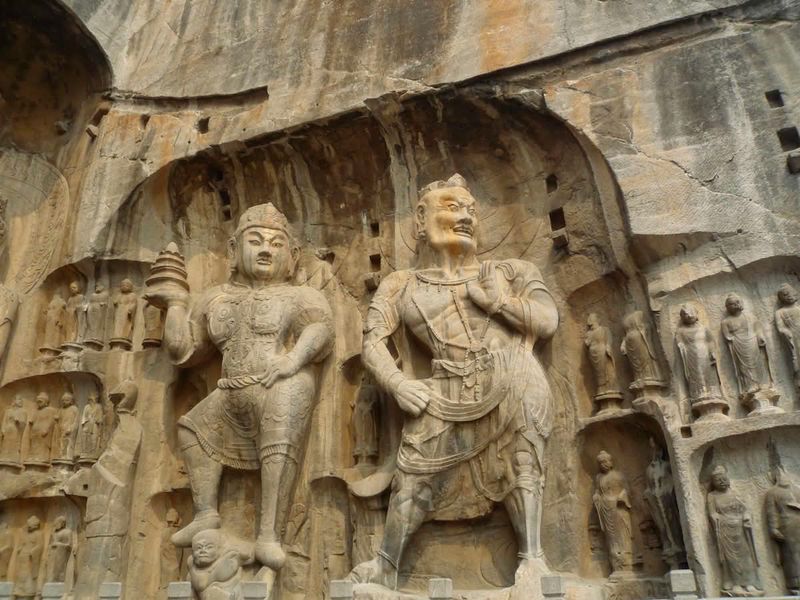Imagine walking streets where people lived thousands of years before the pyramids were built. Some cities have been home to humans for so long that their beginnings fade into mystery and legend. From ancient walls in the Middle East to cobblestone streets in Europe, these incredible places connect us directly to our ancestors. Pack your curiosity and join us on a journey through time to explore cities that refuse to fade away.
Jericho, West Bank
Jericho holds the crown as possibly the oldest city where people still live today. Archaeological digs have uncovered evidence of settlement stretching back to around 9,000 BCE, meaning humans called this place home more than 11,000 years ago. That’s older than agriculture in most parts of the world!
Walking through Jericho feels like stepping into a time machine. You can touch ancient defensive walls that protected early inhabitants from invaders. The Mount of Temptation rises dramatically nearby, offering both spiritual significance and stunning views.
Modern Jericho blends seamlessly with its ancient past. Markets bustle with activity just as they did millennia ago. Visitors can explore Tel es-Sultan, the archaeological mound revealing layer upon layer of human history, making it an unforgettable destination for history lovers.
Byblos, Lebanon
Byblos earned its place in history books as a thriving Phoenician port city. Settlement here goes back roughly 7,000 years, making it one of the Mediterranean’s most enduring communities. Ancient texts mention Byblos repeatedly, proof of its importance in early trade networks.
The city’s name actually gave us the word “Bible” because papyrus scrolls passed through its busy harbor. Exploring Byblos today means wandering through centuries of civilization stacked like pages in a book. Bronze Age foundations sit beneath Crusader castles, with Roman columns scattered between.
The ancient harbor still welcomes boats, though now they’re mostly fishing vessels and tourist craft. Cobblestone streets wind past archaeological treasures at every turn. Whether you’re examining Phoenician temples or simply enjoying fresh seafood by the water, Byblos delivers history with Mediterranean charm.
Damascus, Syria
Damascus claims one of the longest continuous habitation records on Earth. Evidence suggests people settled in the Damascus basin somewhere between 8,000 and 10,000 BCE. That means this city witnessed the dawn of civilization itself, watching empires rise and fall like seasons changing.
The Old City of Damascus feels like walking through a living museum. Narrow alleyways wind between buildings that have stood for centuries. The magnificent Umayyad Mosque dominates the skyline, built on a site sacred to multiple religions throughout history.
Traditional souks burst with colors, spices, and the sounds of merchants haggling just as their ancestors did thousands of years ago. Despite modern challenges, Damascus preserves its incredible heritage. Every stone seems to whisper stories of prophets, conquerors, and ordinary families who made this ancient place their home.
Aleppo, Syria
Aleppo’s history stretches back over 5,000 years, making it one of humanity’s longest-running urban experiments. The city sat at the crossroads of major trade routes, which brought wealth, culture, and unfortunately, conflict throughout the centuries. Its strategic position shaped world history in ways we’re still discovering.
The massive medieval citadel dominates the cityscape like a guardian watching over its people. This fortress sits atop a tell, an artificial hill created by thousands of years of continuous building and rebuilding. Inside the old city, covered souks create a maze of commerce that has operated for generations.
Aleppo’s architecture tells stories of Hittites, Greeks, Romans, Byzantines, and Arabs. Each civilization left its mark on the urban landscape. Though recent years have been difficult, the spirit of this ancient trading hub endures in its people and monuments.
Plovdiv, Bulgaria
Plovdiv proudly stands as Europe’s oldest continuously inhabited city. Archaeological evidence points to settlement around 6,000 BCE, meaning people lived here before Stonehenge was built. The city’s original Thracian name has been lost to time, but its legacy remains visible everywhere you look.
The Old Town cascades down three hills like a waterfall of history. Beautifully preserved Bulgarian Revival houses display vibrant colors and intricate woodwork. A magnificent Roman amphitheater still hosts performances, connecting modern audiences with ancient entertainment traditions.
Walking Plovdiv’s cobblestone streets reveals layers of civilization. Thracian fortifications support Roman walls topped by Ottoman minarets. The city earned its designation as a European Capital of Culture, celebrating both its ancient roots and contemporary creativity. Museums, galleries, and cafes blend seamlessly with archaeological treasures throughout the city.
Jerusalem, Israel and Palestine
Jerusalem’s name alone carries the weight of millennia. Evidence of settlement dates back to the Bronze Age, around 3,000 BCE, though the area may have been inhabited even earlier. Three major world religions consider Jerusalem sacred, creating a spiritual significance unmatched by any other city.
Walking through Jerusalem means navigating thousands of years in a single afternoon. The Old City divides into quarters, each with distinct character and history. Ancient stones beneath your feet have been polished smooth by countless pilgrims, merchants, and residents across the ages.
The Western Wall, Church of the Holy Sepulchre, and Dome of the Rock represent just a fraction of the city’s religious landmarks. Modern Jerusalem surrounds and embraces its ancient core. Markets overflow with spices and crafts while archaeological excavations continue revealing new secrets about humanity’s past in this eternally captivating city.
Susa (Shush), Iran
Susa served as a capital for multiple ancient empires, including the Elamites, Persians, and Parthians. Settlement evidence stretches back to roughly 4,000 BCE, placing it among humanity’s earliest urban centers. The biblical Book of Esther mentions Susa, adding another layer to its rich historical tapestry.
Today’s city of Shush sits atop thousands of years of civilization. Archaeological excavations have revealed stunning palace complexes, including the winter residence of Persian kings. The famous Code of Hammurabi was discovered here, one of humanity’s oldest legal documents.
Visiting Shush means exploring ruins that speak of ancient grandeur. Columns still stand where Persian royalty once walked. The site museum displays artifacts spanning millennia, from prehistoric pottery to glazed bricks from Darius the Great’s palace. Though less famous than other Iranian destinations, Susa offers authentic connections to our distant past.
Athens, Greece
Athens needs little introduction as the birthplace of democracy and Western philosophy. Continuous habitation spans several thousand years, with the city emerging as a major power during ancient Greece’s golden age. Names like Socrates, Plato, and Aristotle walked these streets, forever changing how humans think about the world.
The Acropolis dominates the skyline like a crown of marble. The Parthenon stands as perhaps the most recognizable ancient structure on Earth. Below, the Agora once buzzed with political debates and merchant activity.
Modern Athens wraps around its ancient core like a vibrant embrace. You can sip coffee in trendy cafes, then walk minutes to touch 2,500-year-old temples. Museums overflow with sculptures, pottery, and artifacts. Despite challenges, Athens remains a living testament to human achievement, where philosophy and democracy were born and continue thriving today.
Rome, Italy
Rome’s legendary founding in 753 BCE by Romulus has captivated imaginations for centuries. Archaeological evidence confirms habitation dating to at least the 8th century BCE, with earlier settlements likely existing before that. The phrase “Eternal City” perfectly captures Rome’s refusal to fade into history books.
Walking Rome means navigating layers of time. Ancient Roman forums sit beside Renaissance churches next to Baroque fountains. The Colosseum still stands as a monument to engineering genius and entertainment, though gladiators have been replaced by tourists snapping photos.
Every corner reveals another marvel. The Pantheon’s dome remains the world’s largest unreinforced concrete dome after nearly 2,000 years. Cobblestone streets follow paths laid by Roman engineers. Modern Romans live, work, and play among ruins that would be national treasures anywhere else. Rome doesn’t just preserve history; it lives within it daily.
Istanbul (Byzantium and Constantinople), Turkey
Istanbul has lived three lives under three names. Originally founded as Byzantium by Greek colonists around 660 BCE, it became Constantinople under Roman Emperor Constantine, then Istanbul under Ottoman rule. Each transformation added new layers to an already complex urban tapestry that spans continents.
The city’s location is its destiny, straddling Europe and Asia across the Bosphorus strait. This geographic position made it invaluable for trade and military strategy throughout history. Empires fought desperately to control this gateway between worlds.
Today’s Istanbul pulses with energy from its multilayered past. The Hagia Sophia began as a church, became a mosque, then a museum, and recently a mosque again. Byzantine walls still protect the historic peninsula. Ottoman palaces showcase incredible artistry. Markets that have operated for centuries continue selling everything imaginable, making Istanbul a living bridge between ancient and modern worlds.
Varanasi (Benares), India
Varanasi might be the world’s oldest living spiritual center. Hindus believe Lord Shiva founded the city thousands of years ago, and archaeological evidence supports continuous habitation for at least 3,000 years. The city’s spiritual significance has only grown stronger with time, making it India’s most sacred destination.
The Ganges River defines Varanasi’s identity. Ghats, stone steps leading to the water, line the riverbank for miles. Pilgrims come from across India to bathe in sacred waters they believe wash away sins. Sunrise boat rides reveal the city’s spiritual heart as prayers and ceremonies unfold.
Narrow alleyways wind through the old city like a maze designed by time itself. Temples appear around every corner, some ancient, others newer, all equally revered. The evening Ganga Aarti ceremony fills the air with chanting, bells, and fire, creating an unforgettable sensory experience that connects visitors to millennia of devotion.
Faiyum, Egypt
Faiyum often gets overlooked by tourists rushing to see pyramids and pharaohs elsewhere in Egypt. That’s their loss, because this oasis city has been continuously inhabited since around 4,000 BCE. The ancient Egyptians called it Shedet and worshipped the crocodile god Sobek here, building temples in his honor.
The region’s geography makes it special. A natural depression creates a fertile oasis fed by a branch of the Nile. Ancient engineers enhanced nature’s gift with sophisticated irrigation systems, some still functioning today. Lake Qarun provides fishing and recreation much as it did thousands of years ago.
Visiting Faiyum offers authentic Egyptian experiences without massive tourist crowds. Ancient water wheels creak as they lift water from canals. Archaeological sites reveal pyramids and temples often empty of visitors. The famous Faiyum portraits, realistic paintings of ancient residents, provide haunting connections to real people who lived here millennia ago.
Yerevan, Armenia
Yerevan celebrated its 2,800th birthday in 2018, commemorating the founding of Erebuni fortress in 782 BCE. However, archaeological evidence suggests the area was inhabited much earlier. The city’s distinctive pink and apricot-colored buildings come from tufa stone, a volcanic rock that gives Yerevan its unique appearance.
Mount Ararat dominates the skyline, though it now sits across the border in Turkey. This snow-capped peak holds deep meaning for Armenians, appearing in the national coat of arms. The view creates a stunning backdrop for a city blending ancient history with Soviet-era architecture and modern development.
Republic Square forms the heart of modern Yerevan, surrounded by buildings showcasing Armenian architectural style. Museums preserve treasures from millennia of history. The ancient Erebuni fortress ruins sit on a hill overlooking the city, connecting today’s residents to their distant ancestors who first chose this location as home.
Sidon, Lebanon
Sidon competed with its neighbor Byblos for dominance among Phoenician cities. Settlement here dates back approximately 6,000 years, making it one of humanity’s oldest continuously inhabited coastal cities. The Phoenicians who lived here became famous as traders and sailors, spreading their alphabet across the Mediterranean world.
The Sea Castle defines Sidon’s waterfront, a Crusader fortress built on a small island connected to shore by a stone causeway. This photogenic landmark sits atop much older Phoenician structures. The ancient harbor once launched ships that sailed to the edges of the known world.
Sidon’s old city invites exploration through covered souks and narrow streets. The Soap Museum occupies a restored building, explaining traditional olive oil soap production. Archaeological sites reveal layers of Phoenician, Persian, Greek, Roman, and Arab history. Fresh seafood restaurants line the harbor where Phoenician merchants once traded purple dye worth more than gold.
Luoyang, China
Luoyang served as capital for thirteen different Chinese dynasties, more than any other city in China. Its history as a major urban center spans over 4,000 years. The city’s name means “north of the Luo River,” referring to its geographic position that made it strategically important throughout Chinese history.
The Longmen Grottoes stand as Luoyang’s most spectacular attraction. Thousands of Buddhist statues carved into limestone cliffs range from tiny figures to enormous buddhas. This UNESCO World Heritage site represents centuries of religious devotion and artistic achievement, with the oldest carvings dating back 1,500 years.
Luoyang also claims fame as the birthplace of Chinese Buddhism and the location where paper was invented during the Han Dynasty. Ancient temples dot the landscape, including the White Horse Temple, traditionally considered China’s first Buddhist temple. Modern Luoyang has grown into a bustling city while carefully preserving its remarkable heritage for future generations.


